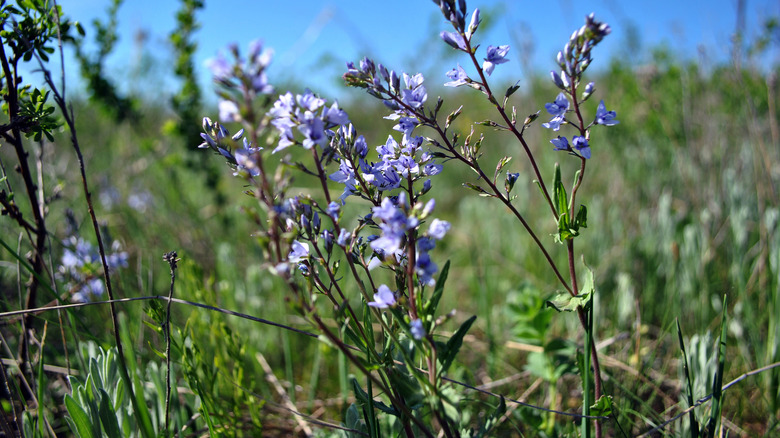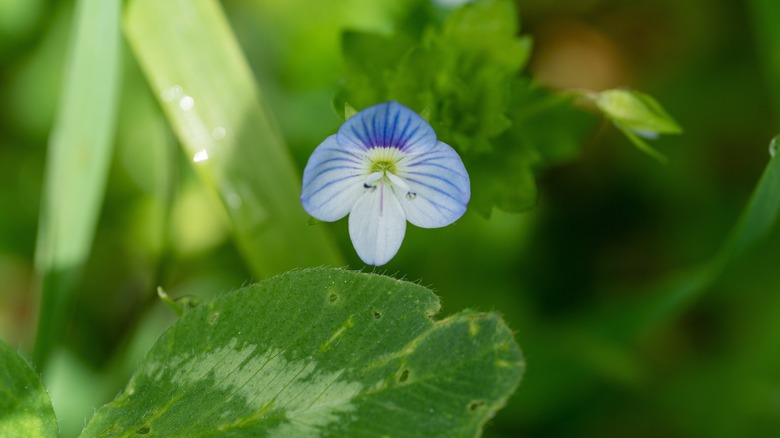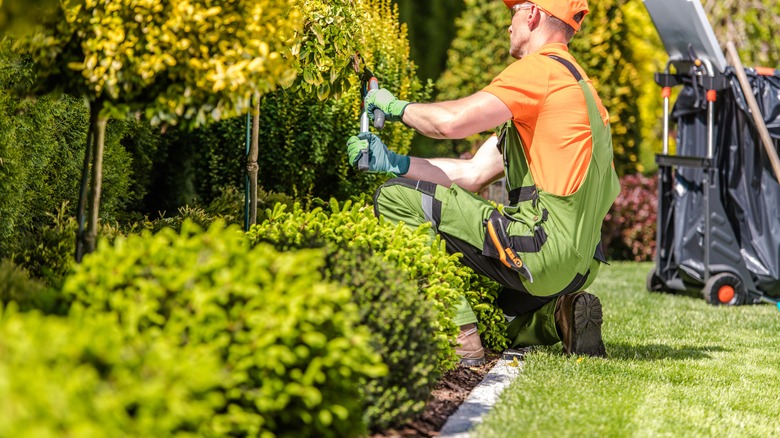The Guide To Identifying And Eradicating Speedwell In Your Lawn
As you walk through your garden, you'll likely find some uninvited visitors, like weeds. These intruders may look innocent at first, but they have the potential to invade your outdoor space and overshadow the plants you've worked so hard to cultivate. Among the different types of weeds are speedwells. These plants come in a few different varieties, such as Veronica persica (referred to as common field speedwell) and Veronica filiformis (widely known as slender speedwell). Dealing with speedwell may not be the easiest task on your gardening to-do list, but the good news is that it is absolutely manageable. However, to successfully combat it, you need to act fast. Whether you choose to pull it out by hand or use herbicides, timely action can stop speedwell from taking over your beautiful lawn. If you delay, it can spread quickly and cover large areas in a short amount of time. This rapid growth can undermine the health and appearance of your lawn, leaving you with an unsightly infestation if not dealt with properly.
To manage the issue, one crucial step is identification. A nuanced understanding of the plant's characteristics is paramount for both immediate and long-term elimination. Once you can accurately identify speedwell by its leaves, growth pattern, and especially its unique flowers, you are well-equipped to tackle a speedwell infestation head-on.
Identifying speedwell in your lawn
As mentioned, understanding the common traits of speedwell is key to quick and effective action. Although it's easy to confuse the types of speedwell, all varieties have similar characteristics. Their flowers are usually a trustworthy way to identify them. They often have elongated stems with leaves arranged in opposite pairs. Depending on the specific variety, these flowers could be bright blue or white. Each plant also features a robust root system and a central stem from which flowers emerge. The flowers generally have four petals and might be found singly or in clusters along the stem. Recognizing these unique flowers is often the best way to confirm you're dealing with speedwell.
In terms of growing conditions, the plant prefers cooler, damper environments. It's frequently found where soil retains moisture due to poor drainage. Typically, the plants stay low to the ground, and in some cases, they form a spreading mat-like growth pattern. This makes them easy to spot but difficult to manage. Furthermore, each plant can produce many seeds, making them capable of spreading quickly. In addition to these features, speedwell plants are often considered hardy and resilient, able to withstand challenging environmental conditions. They thrive even in compacted or nutrient-poor soil. All in all, their ability to thrive in various conditions and their quick-seeding habit make them an invasive species that needs careful management.
How to rid your lawn of speedwell
After correctly identifying speedwell, the next step is eradicating it. Luckily, you have several options at your disposal when removing weeds. The first is manual removal. Since speedwell often has a shallow root system, pulling it out by hand can effectively deal with smaller infestations. Make sure to get as much of the root system as possible (six inches at the very least) to prevent the weed from regenerating. Manual removal is most effective if you use a fork to pull the runners from underneath the soil. Also, it's best to pull the weed out while it's still young instead of waiting too long.
If your lawn has a serious speedwell problem, or you prefer a less labor-intensive approach, chemical control might be your best bet. Herbicides containing ingredients like 2,4-D and dicamba are generally effective against speedwell. Ensure that you read the label for application guidelines and that the herbicide is safe for your type of grass. The best time to apply herbicides is during the growing season when the weeds absorb nutrients. This ensures that the weed-killer is taken up effectively, leading to complete eradication. Following the manufacturer's instructions, you may need to apply the herbicide more than once to ensure complete removal. Finally, consider implementing long-term strategies like improving drainage and regularly fertilizing to create conditions that are less than hospitable for speedwell.


